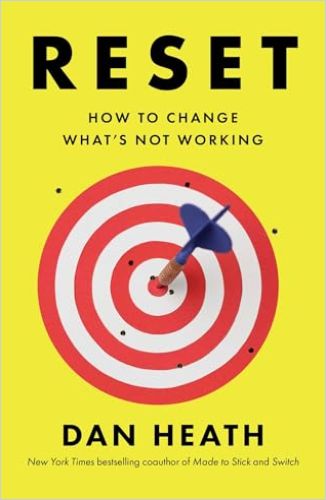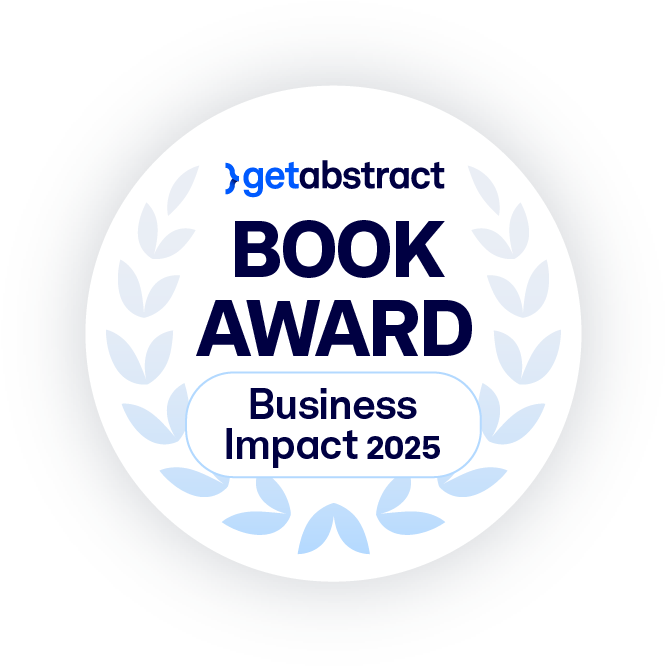Dan Heath explains how to apply leverage to remove impediments that block your processes and to solve complex problems.

Use Your Leverage.
“Leverage Point”
Bestselling author Dan Heath — who also wrote Upstream: The Quest to Solve Problems Before They Happen as well as a series of bestsellers with his brother Chip Heath, including Made to Stick, Switch, and The Power of Moments — offers a process for using leverage to discover what you need to change in your processes and figure out how to change it.
Recognizing that your workplace has a problem is easy. Precisely identifying it and solving it is more challenging, unless you have Heath’s strategic advice. Using the analogy of a lever, a heavy boulder, and problem-solving resources, he advises you to find a point to push at the end of the lever to move the boulder. He outlines a systematic process for learning what you need to change, determining what shift in practice or process will create the needed change, and then mobilizing and deploying the right forces to manifest your change.
[Seek] interventions that are both doable and worth doing.Dan Heath
For example, a Chicago high school administrator examined a program for students who were falling behind by shadowing a student for a day. He discovered that the entrenched process might be counterproductive and found ways to make it work for his students. To get this kind of fresh, detailed perspective, businesses sometimes hire outside consultants to fix problems. This works because the consultants delve into learning how a system is malfunctioning and talk to people on the front lines.
Pick the right rock.
Once you understand leverage, Heath cautions, make sure the boulder you choose to move is the right obstacle to tackle. When personnel at a truck dealership pushed a customer to complete a survey about its services, they erroneously saw their goal as getting good scores, not as receiving useful feedback. Their process did not achieve its intended goal. Similarly, a railroad company seeking savings and efficiency mistakenly focused on making trains faster rather than on improving its passengers’ experience.
To find the “goal of the goal,” state your objective, ask why it matters, and brainstorm ways to achieve it. For example, an organization that reframed its objective from getting veterans to apply for its loan-forgiveness program to forgiving more veterans’ loans found that stating its goal in terms of results increased its success rate dramatically.
Never use averages to assess performance. Airplane pilot seats designed to fit the average dimensions of military pilots didn’t fit anyone. For better results, designers shifted to adjustable seats.
Study individual cases and identify the “bright spots” — proven leverage points that work. Find the constraint that limits your ability to achieve your goals and identify how to overcome it. For example, Chick-fil-A improved its customers’ satisfaction with the rate at which they moved through drive-through lanes by stationing people outdoors to take orders from drivers waiting in the lanes. Chick-fil-A asked customers about their sense of their orders’ speed and progress, instead of measuring only the actual time they spent in line.
Prioritizing the removal of constraints can correct any system, from food service to healthcare.
Map the system.
To find leverage points, map out the larger system around you. For example, the founders of an unsuccessful program to help low-income students launch successful careers had focused on promoting college attendance. When they studied the entire system, they learned they had to look beyond college and found that the job application process limited students’ eventual ability to establish solid careers. They improved their results by giving students personalized job search advice.
By studying the way systems function – and the relationships between their parts – you can find leverage points that unlock progress, even on a global scale.Dan Heath
Identify your leverage point, then build momentum by gathering resources. When the new director of a data storage center found it in disarray, he set up one day a week when everyone collaborated to fix its archiving backlog. Choosing which leverage point to attack and having staffers work together created momentum and led to success.
Positive Energy
Search for places in your system that waste effort. For example, a trash hauler improved its service by sending large trucks only to places where large items awaited pickup and deploying smaller trucks when big ones weren’t necessary.
To reduce waste, consider your overall picture. Examine entrenched habits. Focus on quick wins. Use time well. Avoid unnecessary oversight.Distinguish major irreversible decisions from less consequential, changeable, or correctable ones. You can exert less control over the choices you can fix later. Trade non-essential activities or resources for those that strengthen your leverage.
Be aware, Heath says, of the different factors that motivate different people. Align your employees’ contributions with their personal motivations and wishes. For example, a new leader helped turn a decrepit library into a community hub by getting local people excited about the diverse ways it could serve their individual needs.
Ownership
Enable your employees to own the processes they use. Cultivate alignment and autonomy by presenting a goal and not micromanaging how your team members achieve it. For example, T-Mobile improved its call centers by refocusing from keeping expenses at a minimum to maximizing customer experience. T-Mobile redirected its call center’s employees so they could begin to function as a team that could take responsibility for building caller relationships. In another example, real-time, real-place feedback from football fans helped stadium experience managers rapidly and efficiently identify and solve problems.
The right information in the right moment is the ultimate navigational aid.Dan Heath
A public radio program developed a detailed list of promising ideas for improvement. It solicited feedback to get a sense of what might succeed, instead of launching full programs to test each idea. Remember, though, that even attempts that don’t succeed often can spark ideas for successful leverage points.
A Brazilian nurse who wanted to improve morale in her hospital focused on employees who felt excluded from decision-making. She invited these staff members to post public notes listing the factors that made their work satisfying and the factors that impeded their goals. The nurse and her coworkers identified common threads among the complaints and brainstormed with employees to address their concerns.
Workers shared their experiences daily by voting with colored ping-pong balls to register positive or negative outcomes — the colorful array constituted fast, visible feedback that enabled leaders to course correct as needed. Worker satisfaction increased, and patient experiences improved. The positive effect spread throughout the system and beyond to other systems as well.And, as Heath explains, the hospital achieved this positive change by reassigning resources, not spending extra money.
Productive shifts generally occur in proactive, intentional ways. Removing impediments and generating positive change empowers you and your people to recognize that you can accomplish the impossible.
Push
Dan Heath is an institution. His direct, conversational, no-nonsense —and bestselling — advice has built an empire of admired life and business guidance that readers treasure. Here, Heath exhorts leaders not to look for solutions from without, but to seek impediments from within, and get rid of them. He offers numerous, inspiring examples of leaders who did exactly that in a wide array of circumstances. Heath’s writing is absurdly readable. You may have difficulty putting the book down. You’re likely to feel a powerful urge to read it in one sitting, so you can devour Heath’s wise counsel. And he will reward your focus.














